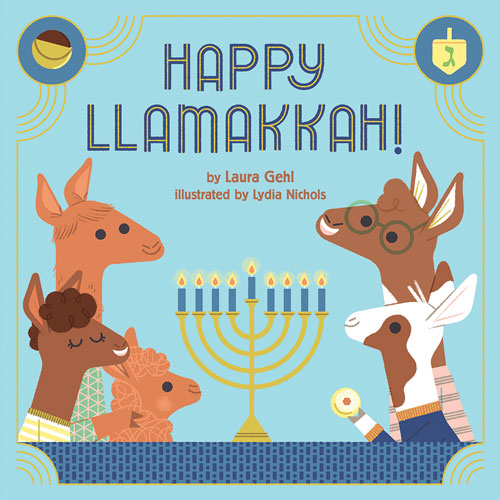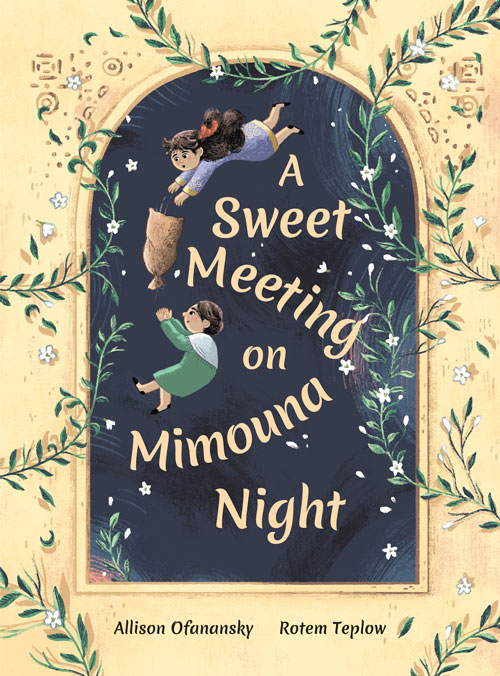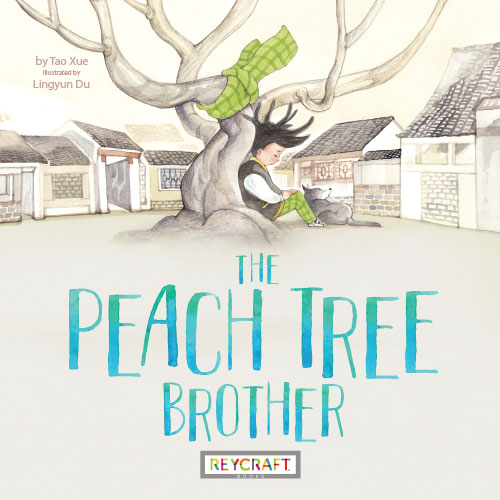From Post-Passover to Peach Tree | Picture Books Spotlight
Dreidel-spinning llamas, locating the right flour for a holiday treat, and getting just the right haircut for an event remind readers that are so many festivals and so many reasons to celebrate, all year around.
Move over turkeys, and step aside, Christmas trees. This is not your typical holiday round-up: We’ve unearthed a holiday with haircuts, what happens after Passover, and llamas spinning dreidels. Consider highlighting these unusual seasonal gems from Tao Xue, Laura Gehl, and Allison Ofanansky.
 Gehl, Laura. Happy Llamakkah! illus. by Lydia Nichols. 24p. Abrams/Appleseed. Oct. 2020. Tr $14.99. ISBN 9781419743146.
Gehl, Laura. Happy Llamakkah! illus. by Lydia Nichols. 24p. Abrams/Appleseed. Oct. 2020. Tr $14.99. ISBN 9781419743146.
PreS–A family of llamas observe Llamakkah in this brightly colored picture book that reminds readers about the coziness and joy of that Jewish holiday. Each page describes different Llamakkah traditions in gentle rhymes, while personified llamas celebrate with their friends and family over the course of a wintry few days. Candles lit on the menorah denote the passage of time, while the llamas spin dreidels, light candles, fry latkes, sing, eat doughnuts, enjoy gelt, and spend time outside in the snow. An author’s note describes the history of Hanukkah and its significance, defining important words used in the text. While it is never made clear within the text that Llamakkah is meant to be Hanukkah, it’s an easy conclusion. Nichols’s digital illustrations of playful llamas are delightful and draw heavily on the shades of blues commonly associated with the holiday. VERDICT A sweet if simple addition to the Hanukkah canon. Purchase in larger collections and where holiday books are needed.–Kelsey Socha, Springfield City Lib., MA
 Ofanansky, Allison. A Sweet Meeting on Mimouna Night. illus. by Rotem Teplow. 36p. Groundwood. Nov. 2020. Tr $18.95. ISBN 9781773063973.
Ofanansky, Allison. A Sweet Meeting on Mimouna Night. illus. by Rotem Teplow. 36p. Groundwood. Nov. 2020. Tr $18.95. ISBN 9781773063973.
Gr 1-5–When Passover ends, along with dietary restrictions, the Moroccan Jewish holiday of Mimouna begins, but where do observant Jews find flour at that time of night for the traditional and delicious moufleta? Miriam’s mother responds to her daughter’s question with a walk to the Muslim part of town, where they have tea with Jasmine, a girl Miriam’s age, and her mother. After tea, Jasmine’s mother sends them home with a bag of flour and is invited to the celebration. Preparations and the party ensue, quietly conveying the traditions of this holiday. As Jasmine repeatedly saves the day when Miriam keeps tripping, the shy girls shed their fears and become fast friends. The next Mimouna finds Miriam’s family in Jerusalem, where she remembers Jasmine fondly. Ofanansky’s text is dense but flows nicely. It conveys a lot of information while remaining accessible. In a mix of full- and half-page spreads, Teplow’s illustrations depict wonderful facial expressions and add texture and life to the text, while his use of patterns, architecture, and colors effectively evokes Morocco. Everyone shown has many different shades of pale skin, while yarmulkes, fezzes, and other head coverings abound. The back matter provides more loving details and a recipe. VERDICT The lesson of intercultural cooperation is subtle but compelling. This introduction to an important holiday and sharing will be a welcome addition to many collections.–Catherine Callegari, Gay-Kimball Lib., Troy, NH
 Xue, Tao. The Peach Tree Brother. illus. by Lingyun Du. 24p. Reycraft. Nov. 2020. Tr $14.95. ISBN 9781478869801; pap. $6.95. ISBN 9781478869795.
Xue, Tao. The Peach Tree Brother. illus. by Lingyun Du. 24p. Reycraft. Nov. 2020. Tr $14.95. ISBN 9781478869801; pap. $6.95. ISBN 9781478869795.
K-Gr 2–On Chinese New Year’s Eve, Xiaoke and his dad visit the house Xiaoke’s grandparents once lived in, as well as the peach tree growing in the alley. This isn’t just any peach tree for Xiaoke; it represents his “peach tree brother.” On the second day of the next month, Xiaoke and his dad return to the neighborhood for customary haircuts to welcome spring. Terrified of the barber’s scissors, Xiaoke flees the barbershop to find comfort with his peach tree brother. He sees that its surrounding neighborhood is to be demolished, along with the tree. As the crane arrives and begins to tear down homes, Xiaoke acts quickly to save the tree before it’s too late. Set against the backdrop of the traditional Chinese Longtaitou festival, delicate pencil and watercolor illustrations depict Xiaoke’s special bond with his peach tree. The festival is never explicitly named, but the phrase “On the second day of the second month, the dragon raises its head” and the ritual haircuts on this day point to the traditional observances for the Longtaitou festival. The lack of a foreword or back matter may leave some readers with questions. Still, the point of Xiaoke’s action is clear, and the activism will appeal to elementary age audiences. VERDICT An adequate addition to collections to represent customs for an annual traditional Chinese festival, though background information is needed.–Emily Brush, Novi P.L., MI
RELATED
The job outlook in 2030: Librarians will be in demand
The job outlook in 2030: Librarians will be in demand
ALREADY A SUBSCRIBER? LOG IN
We are currently offering this content for free. Sign up now to activate your personal profile, where you can save articles for future viewing





Add Comment :-
Be the first reader to comment.
Comment Policy:
Comment should not be empty !!!